Over 80 secondary school students participated in the APPEA Youth Program run during the 2018 APPEA Conference in Adelaide. APPEA (Australian Petroleum Production and Exploration Association) is the peak national body representing Australia’s oil and gas industry. The Youth Program aimed to inspire students to follow science, technology, engineering and mathematics (STEM) related study and career paths, particularly in the petroleum industry. The program included a hands-on activity session, tour of the conference exhibition, career presentations and discussion forum. The hands-on activities were mini-experiments where the students investigated some interesting concepts in petroleum engineering and geology.
In one activity students identified the minerals present in a sample of “scale” from a gas well. Water is commonly produced from wells along with natural gas and contains a mix of dissolved minerals, such as calcium carbonate and sodium chloride. Scale is formed when these minerals precipitate out of solution at specific conditions. It is a problem because it blocks wells and pipelines reducing the flow of gas or oil. Identifying the mix of minerals in scale is an important step towards working out how to remove it and hopefully preventing it from forming.
The students started their investigation observing the sample by eye and under low magnification with a binocular microscope. The sample was fairly well crushed so further analysis was needed. They then tested whether any of the sample dissolved in water, an indicator for the mineral halite. They also checked for carbonate minerals, mainly calcite, by seeing if the sample fizzed with acid. The last stage of the experiment was to view the crushed sample under a Hitachi bench-top scanning electron microscope (SEM). The students used the distinctive shape of the scale crystals to aid identification. For example, calcite tends to form rhombohedra and halite tends to form cubes. Backscattered electron intensity was also used to differentiate between minerals, particularly the barite (barium sulphate) in the sample.
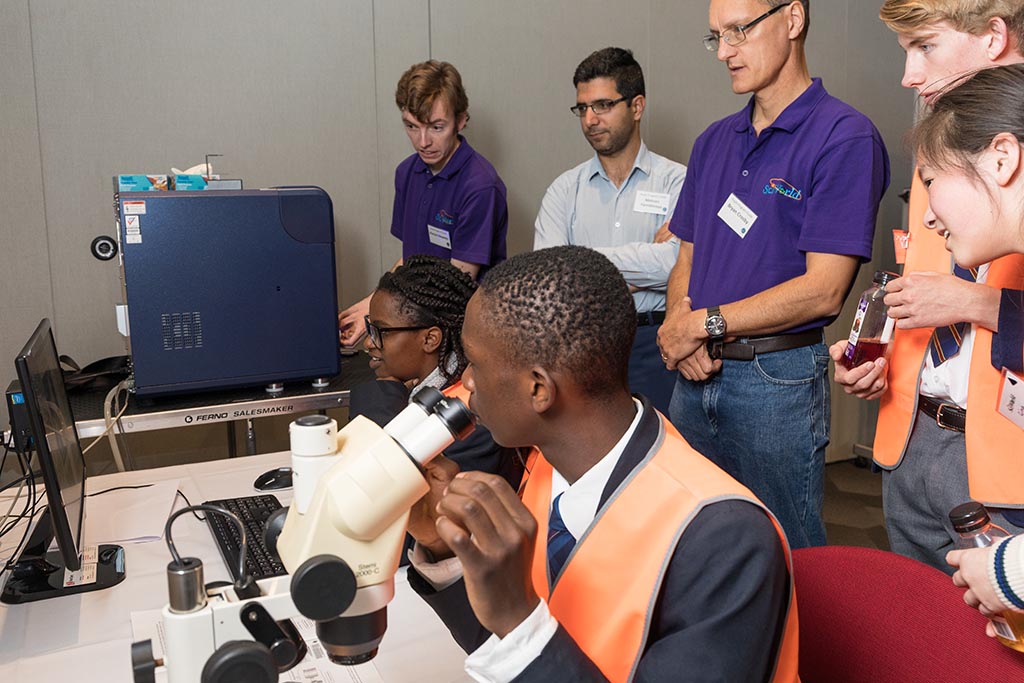
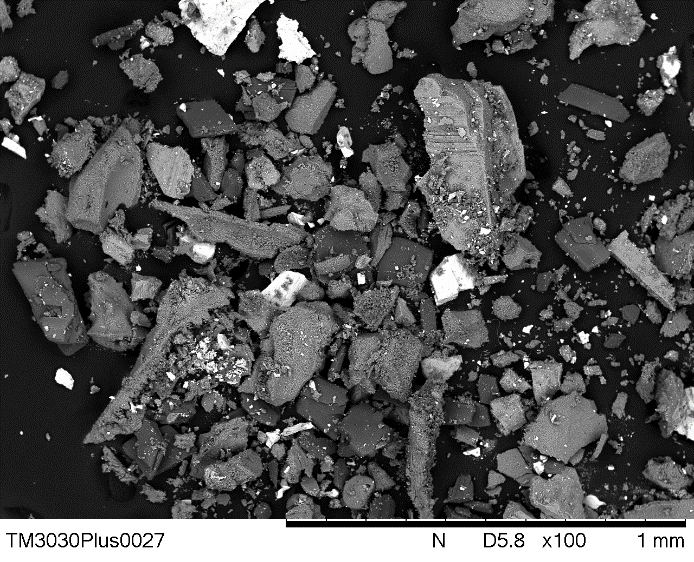
Backscattered electron image of crushed scale. Barite is clearly visible as white grains.
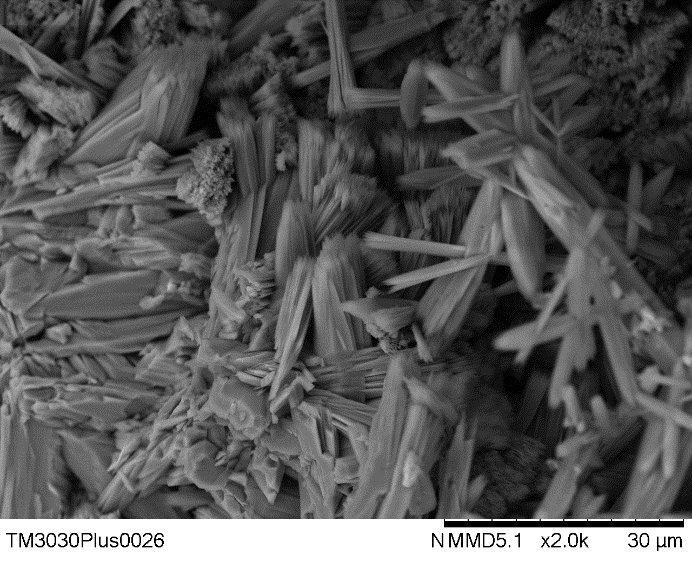
Needle like crystals of what is thought to be an iron mineral in the sample.
After the main activities, there was also the chance to look at some more interesting specimens under the SEM, including the shells of some foraminifera (forams). Forams are micro-organisms that live in the ocean and leave distinctive shells. The shells are usually tiny – less than 1 mm in size. Forams can be used by geologists for dating sedimentary rocks where the fossilised shells are found.
Overall the program was very successful with the students interested to learn about something new and different. Some teachers were also keen to follow up on how they could incorporate microscopy in their lessons. The organisers would like to thank NewSpec Pty Ltd for generously donating the benchtop SEM and their time to set it up.
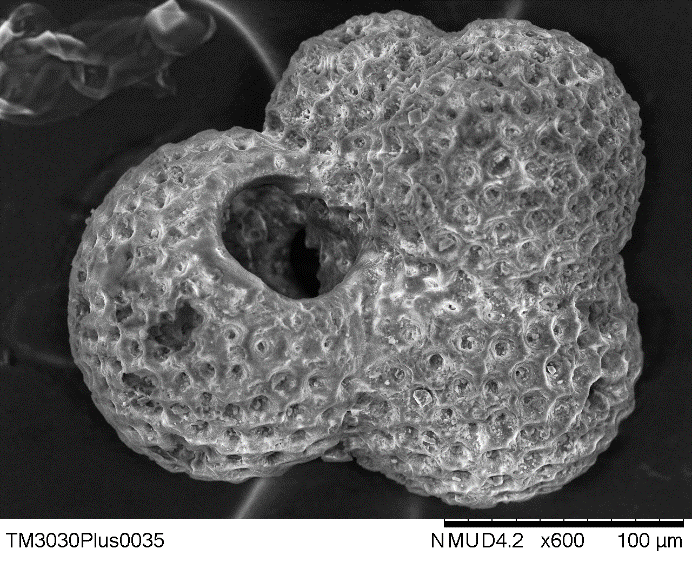
A planktonic foram that floats in the water column.
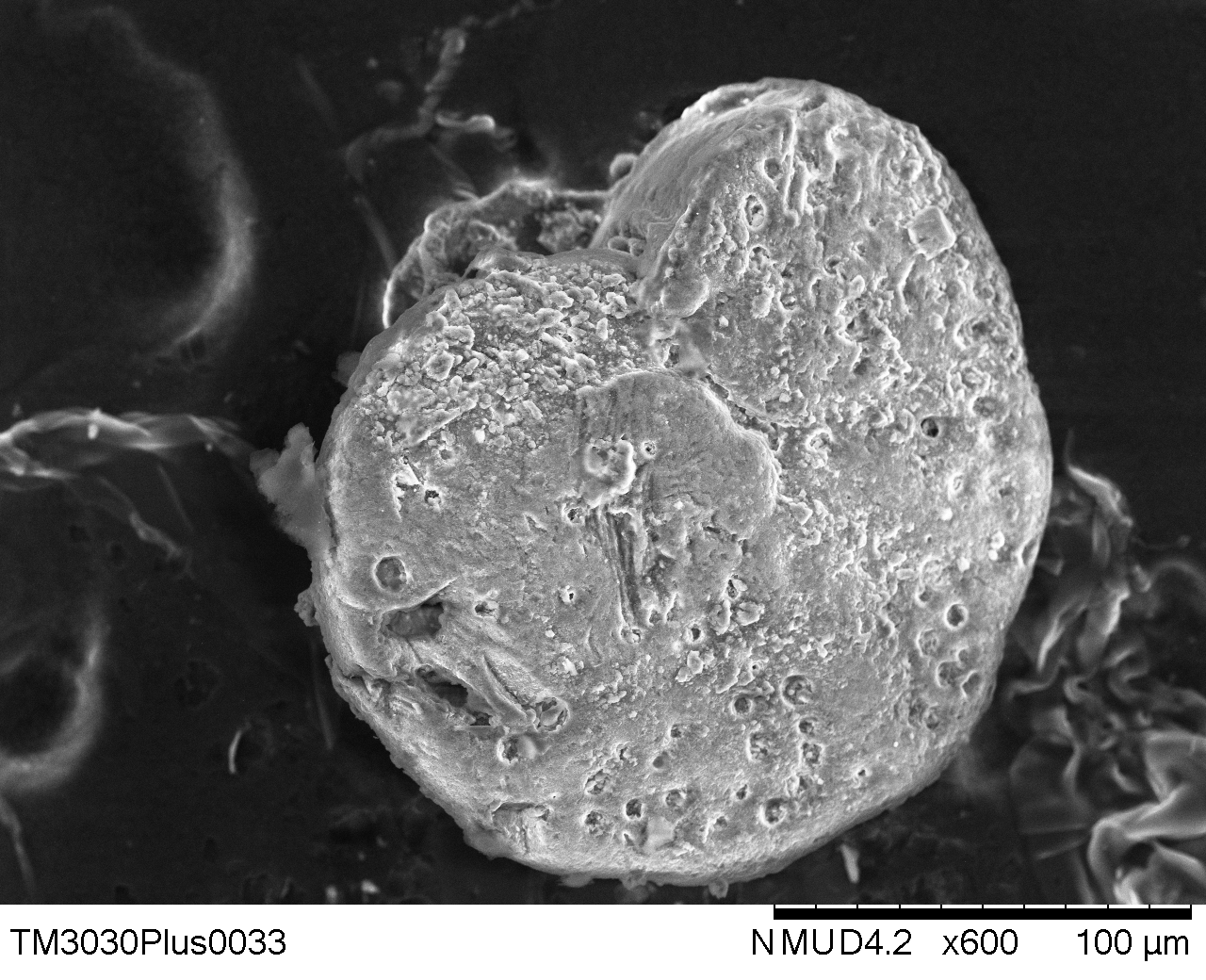
A benthic foram that lives on the seafloor.
